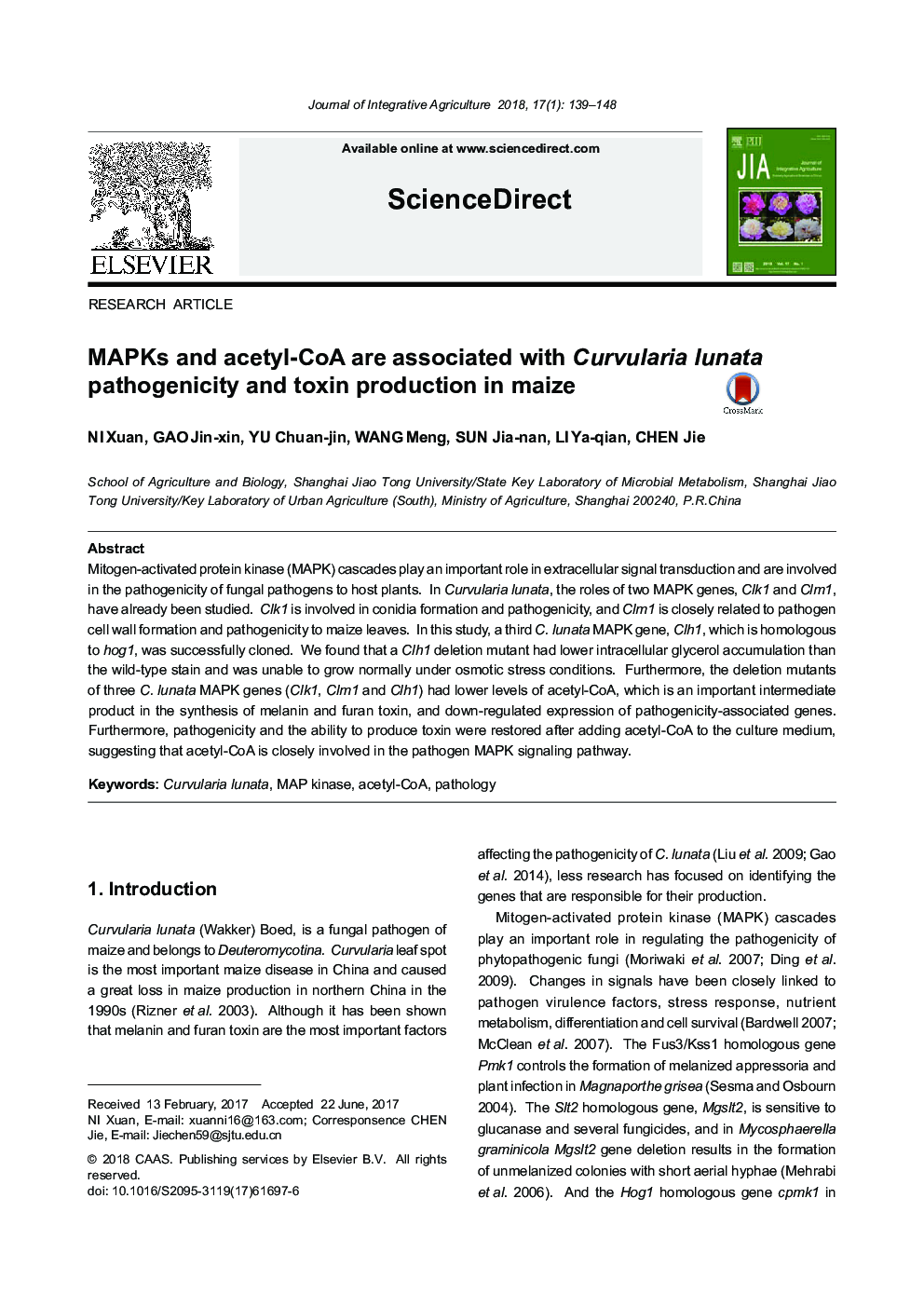| Article ID | Journal | Published Year | Pages | File Type |
|---|---|---|---|---|
| 8875737 | Journal of Integrative Agriculture | 2018 | 10 Pages |
Abstract
Mitogen-activated protein kinase (MAPK) cascades play an important role in extracellular signal transduction and are involved in the pathogenicity of fungal pathogens to host plants. In Curvularia lunata, the roles of two MAPK genes, Clk1 and Clm1, have already been studied. Clk1 is involved in conidia formation and pathogenicity, and Clm1 is closely related to pathogen cell wall formation and pathogenicity to maize leaves. In this study, a third C. lunata MAPK gene, Clh1, which is homologous to hog1, was successfully cloned. We found that a Clh1 deletion mutant had lower intracellular glycerol accumulation than the wild-type stain and was unable to grow normally under osmotic stress conditions. Furthermore, the deletion mutants of three C. lunata MAPK genes (Clk1, Clm1 and Clh1) had lower levels of acetyl-CoA, which is an important intermediate product in the synthesis of melanin and furan toxin, and down-regulated expression of pathogenicity-associated genes. Furthermore, pathogenicity and the ability to produce toxin were restored after adding acetyl-CoA to the culture medium, suggesting that acetyl-CoA is closely involved in the pathogen MAPK signaling pathway.
Related Topics
Life Sciences
Agricultural and Biological Sciences
Agricultural and Biological Sciences (General)
Authors
Xuan NI, Jin-xin GAO, Chuan-jin YU, Meng WANG, Jia-nan SUN, Ya-qian LI, Jie CHEN,
